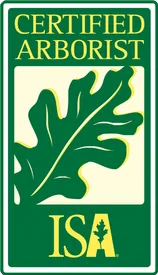When you think of home maintenance, you might not automatically think of your trees, but the truth is, you are responsible for the trees on your property. Trees can be a beautiful addition to your property and homes, but they can also be a danger and a possible liability if they are not maintained properly.
This quick guide will provide you with some information on tree maintenance. In this post, we will answer the following questions:
What problems do trees experience in the winter?
Are trees weaker in the winter?
Winter Tree Maintenance
Winter is a time of year in which trees are considerably weaker than during other times of the year. The reason for this is that the trees have much less water moving through the trunk and branches. The trees are dormant during the winter, so there is no growth happening. This dormant (or resting) phase results in weaker branches.
Another reason why trees are weaker in the winter is because of cold temps. When the temperature dip below freezing, branches can become brittle and are more likely to snap.
Let’s look at a few common problems that trees experience during the winter.
Cold Damage
As mentioned above, when temps drop below freezing, branches become weak and brittle. This can result in branches snapping. In some severe cases, it can even result in trees being blown over during high winds as well.
Snapping branches are a threat to the people and animals on your property, as well as vehicles. If trees are located near your home, it could also pose a threat to your house.
Drought
Because trees are in a dormant state during the winter, they do not absorb water as quickly as they do during other seasons. If there also happens to be a long dry spell during the winter, it could result in the tree losing even more moisture. These types of drought conditions will cause trees to become unhealthy and weak.
Heaving
Heaving happens during the winter when the soil swells up during a freeze. When moisture freezes, it expands. The moisture in the soil can freeze and expand when temps are very low.
Heaving is not always very obvious in areas where there is no concrete, but it is happening all the same. When this happens, it can impact tree root systems. Heaving can weaken root systems can result in downed trees during high winds.
Sunscald
The winter may not be a time you would normally associate with sunscald, but it can happen. Sunscald on a tree is the same as a sunburn on a human.
When the sun shines brightly and warmly on some days during the winter, the bark will warm up quickly. This can activate the tissues in the bark, but when the temps drop quickly again, that same activated tissue will quickly go back dormant. This back and forth is unhealthy for the tree and can lead to rot.
Damage by Animals
During the cold winter months, animals will seek shelter in trees, and at times they can cause damage. Once animal damage has started, it can quickly weaken a tree and lead to rot.

